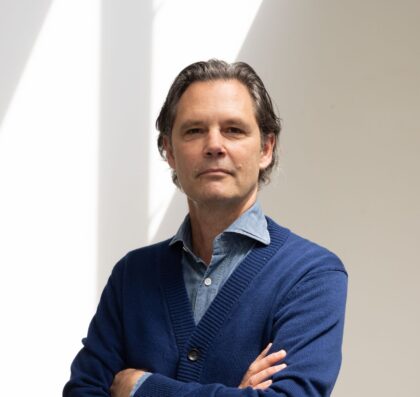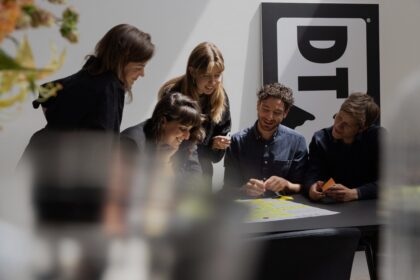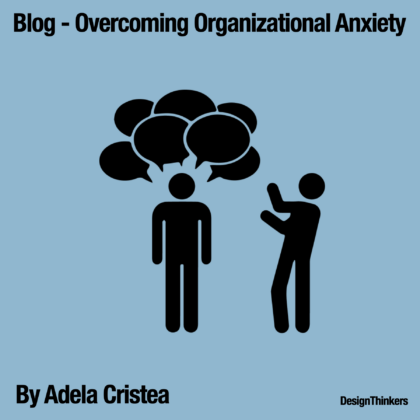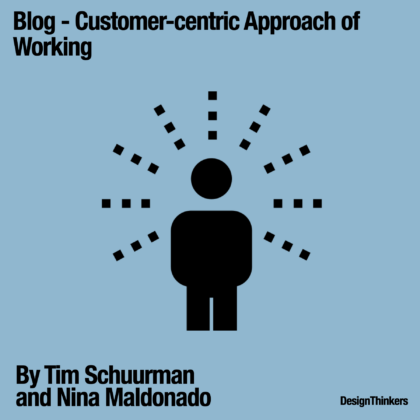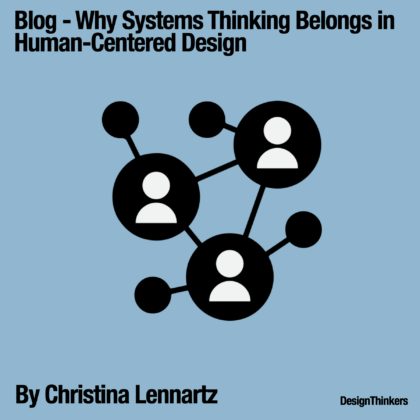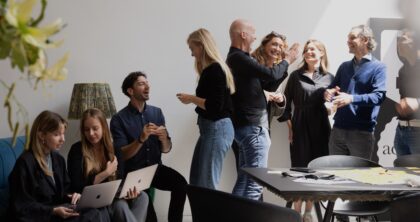
Beyond Resilience: Anti-Fragility to overcome Organizational Anxiety
Written by Adela Cristea | Co-Founder Design Thinkers Academy Eastern Europe
Amy is a dedicated mother and an administrative assistant at a mid-sized company. Recently, her line manager, Tom—a kind and empathetic leader—shared some big news: the company is about to undergo significant changes. A new ERP system will be implemented, AI-driven tools will be introduced, and new colleagues will join the team. On top of that, due to an internal restructuring, Amy’s role might even be moved to a different department.
But Tom reassures her:
“Don’t worry, Amy. Everything will be fine. Just keep up the great work, stay open and be resilient.”
Sitting at the desk next to her, Adrien, her senior colleague, isn’t as optimistic. He scoffs, rolling his eyes.
“This is just corporate nonsense. They’ll replace us with AI and call it ‘innovation.’ Nobody actually cares about us.”
He leans in, lowering his voice.
“And seriously, why do we even need a new ERP? The old one works just fine. We’ll waste a year learning the new system only to realize it’s even worse. You know how it goes, Amy. They never ask us before making these decisions. Then, we’re the ones stuck dealing with the fallout.”
Amy feels torn. On one side, she wants to trust Tom. On the other, Adrien’s cynicism resonates with her fears. As she heads home, a wave of uncertainty settles in.
Will she still be relevant in the coming years? Will she be able to keep up with all these changes? Will she even have a job?
She reminds herself that at least she has a supportive leader. What about those whose bosses are indifferent—authoritarian, unempathetic, and unconcerned about their people? But still, anxiety won’t go away…
She wonders if she should start upskilling, learning something new—but what? Where would she even begin? Frustration builds inside her as the weight of the unknown presses down. Lost in thought, she barely notices her daughter chatting beside her. By the time she realizes she hasn’t been paying attention, guilt creeps in.
She considers discussing it with Elena, her HR Business Partner, but hesitates. Elena is always overwhelmed with administrative tasks. Over the past few months, Amy has seen her leaving the office late, caught up in back-to-back meetings, looking tense and exhausted. HR is already struggling with the implementation of a new Talent Management System that isn’t working properly. On top of that, Elena is juggling recruitment for new positions and managing the complexities of the restructuring process.
Why add to her the additional burden of what feels like an insignificant problem?
Are we truly supporting employees through change?
There are so many “Amys” in organizations today—employees caught in the whirlwind of change, told to be resilient and adapt. But are we, as organizations or HR leaders, truly supporting them in navigating this uncertainty? Are we equipping them with the tools to understand what’s happening and prepare for what’s coming?
These questions have been on my mind a lot lately. We speak a lot our days about Employee Experience, but we still do so little. In companies we see more and more what we call organizational anxiety—the widespread stress, insecurity, and fear of the unknown fueled by rapid technological shifts, the rise of AI, and concerns about mass layoffs. But how can we deal with it?
What is anti-fragility and why does it matter now?
Nassim Nicholas Taleb introduced the concept of anti-fragility in Antifragile: Things That Gain from Disorder (2012). Unlike resilience, which focuses on recovery, anti-fragility thrives on adversity, growing stronger from stressors, uncertainty, and challenges.
In today’s AI-driven, rapidly changing workplace, employees who embrace uncertainty will be the real winners. But anti-fragility isn’t about being fearless—it’s about developing the right mindset and skills to navigate disruption effectively.
Anti-fragile employees:
- Embrace change – They see uncertainty as an opportunity, not a threat.
- Continuously learn – They evolve their skills to stay relevant.
- Leverage technology – They use advancements for growth, not as obstacles.
- Manage stress – They develop strategies to cope and thrive.
- Seek opportunity in disruption – They don’t just adapt; they innovate.
Unlike resilient employees who recover from challenges, anti-fragile employees turn adversity into fuel for growth.
“AI is not primarily a ‘technology’ or ‘operational’ issue; rather, it is an issue for organizational People Functions.”
How can organizations cultivate anti-fragility?
Anti-fragility isn’t an inherent trait—it can be developed through the right culture, mindset, and leadership. Organizations can foster anti-fragility by:
- Helping employees embrace change as an opportunity rather than a threat.
- Encouraging diverse perspectives to promote agility and innovation.
- Providing continuous and relevant / up to date learning and development opportunities, to equip employees for the future.
- Creating a culture where failure is seen as a growth opportunity rather than a source of punishment.
Here are some practical steps to build anti-fragility:
- Reduce fear by reducing the unknown – Fear of change often comes from uncertainty. Helping employees envision possible future scenarios lowers stress and fosters a proactive mindset.
- Encourage ownership of change – Employees are more engaged when they have a say in shaping their future. As the saying goes in Futures Thinking: “Nobody likes to live in someone else’s future.” By involving employees in change initiatives, we empower them to take ownership rather than passively endure transitions.
- Teach employees to see technology as an ally, not an enemy– Equip teams with the skills needed to understand and leverage technology, including AI, ensuring they evolve with it rather than being replaced by it. Trainings like dr. Robert Collins’s course on “AI Demystified” should be a must for everyone.
- Help employees embrace discomfort for growth – Growth rarely happens within the comfort zone. Teaching employees how to navigate and learn from adversity is key to building resilience.
- Build leadership skillsthat are oriented towards the world of the future. Leaders of the future must be able to inspire, guide, motivate and help team members navigate uncertainty and grow through adversity.
- Develop the right skill set for an AI-driven world – The rise of AI demands new competencies to navigate volatility and make informed decisions. Autonomous thinking (a mix of critical thinking and creativity for better decision making) as well as empathy will be essential future skills.
- Emphasize “failing forward” – Failure isn’t a setback; it’s part of the learning process. Organizations should normalize failure as a growth engine rather than something to fear.
GET IN TOUCH WITH ONE OF OUR EXPERTS: TIM SCHUURMAN | FOUNDER & SENIOR CONSULTANT
Jump on a free intro call today
You can leave your email and phone number below and we’ll be sure to contact you as soon as possible.
You can leave your email and phone number below and we’ll be sure to contact you as soon as possible.
